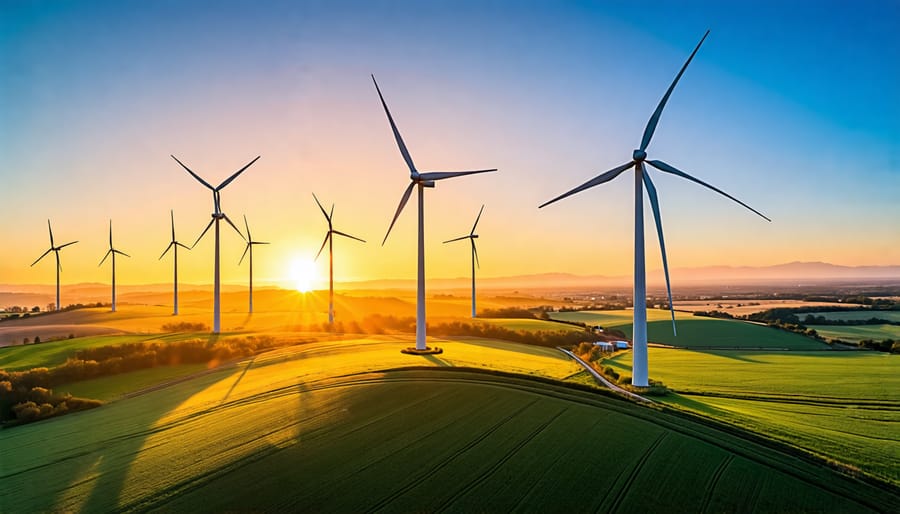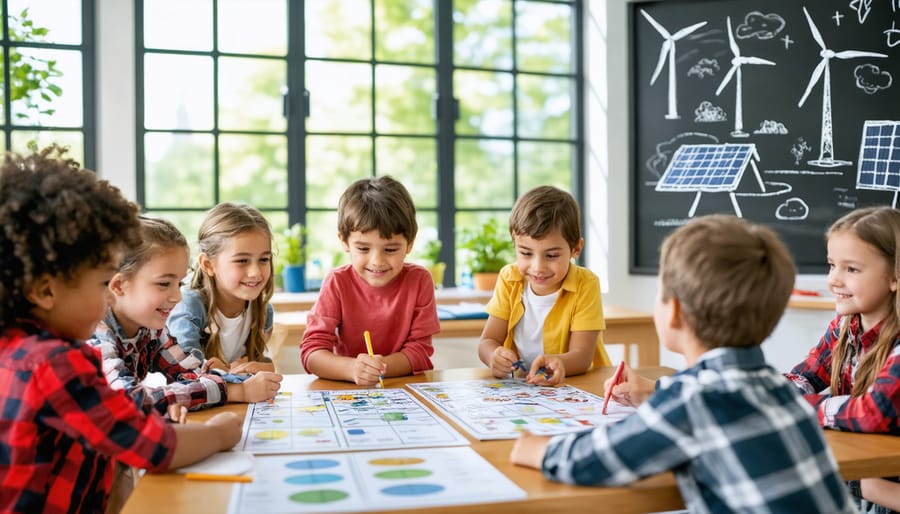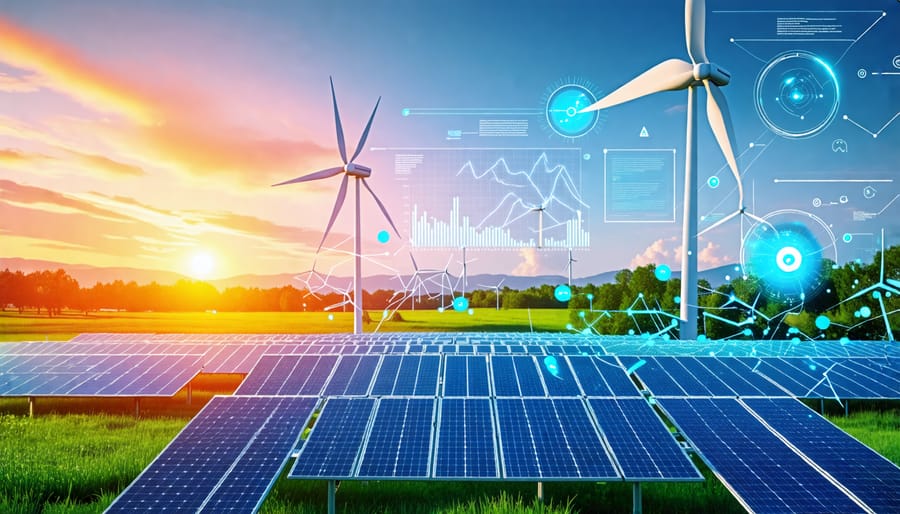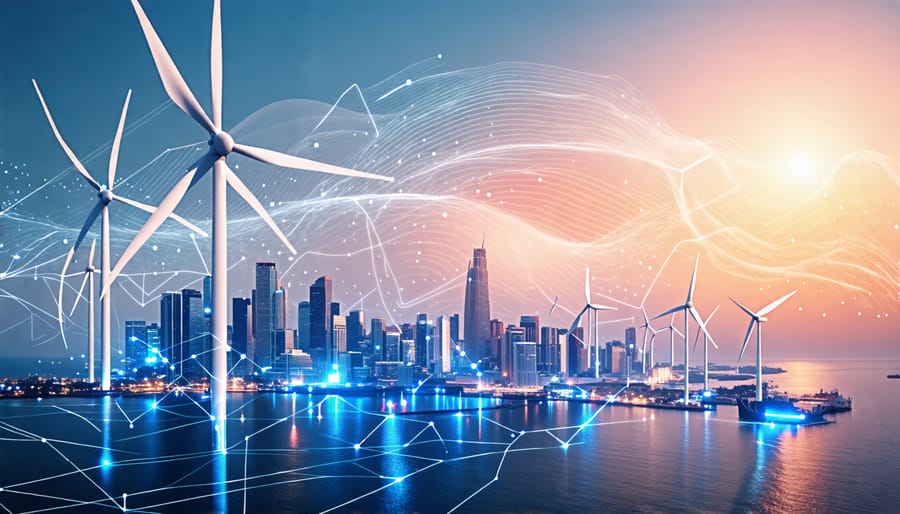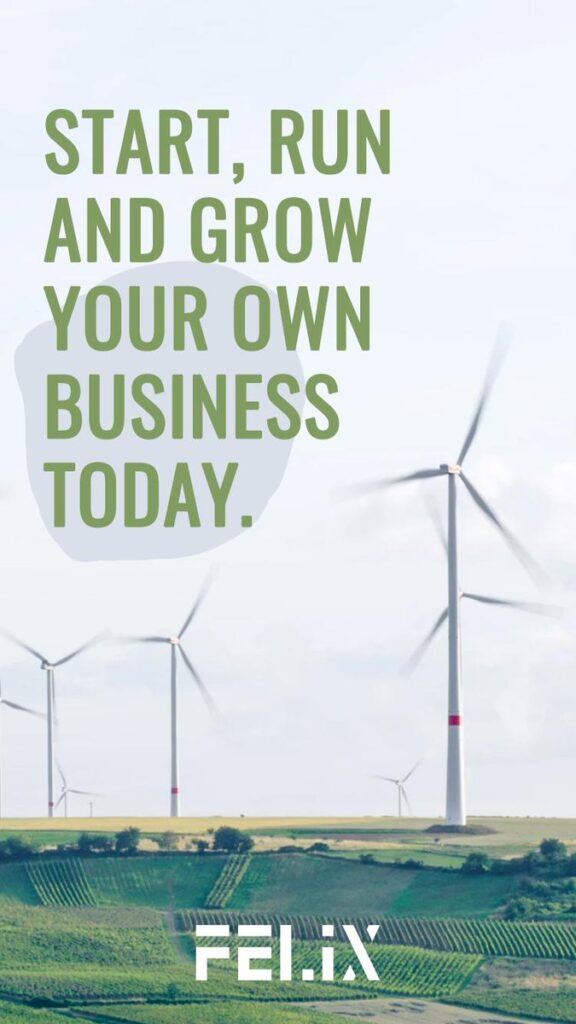Imagine a world powered by nature’s breath – where towering turbines gracefully spin in the wind, converting an endless supply of clean energy into electricity. Wind power is rapidly emerging as a leading solution in our battle against climate change, offering a sustainable, low-carbon alternative to fossil fuels. By harnessing the kinetic energy of moving air, modern wind turbines ingeniously transform the wind’s might into a steady flow of electrons that light up our homes, charge our devices, and power our industries. As we stand at a critical juncture in human history, understanding how wind power works is more important than ever. In this article, we’ll embark on a fascinating journey to explore the science, technology, and immense potential of generating electricity from wind – nature’s gift of renewable energy that promises to reshape our planet’s future. Get ready to be blown away by the power of the wind!
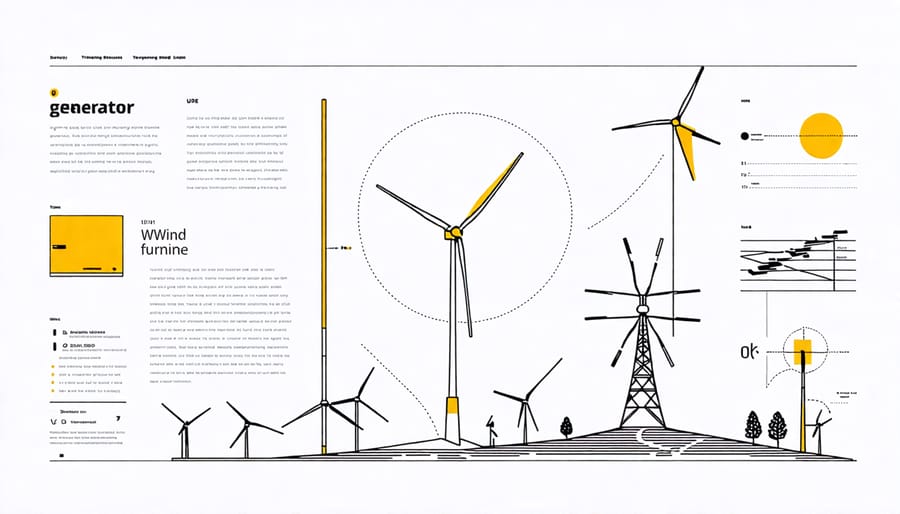
Anatomy of a Wind Turbine
Blades and Rotor
The blades of a wind turbine are the key components that capture the kinetic energy of the wind and convert it into rotational motion. Modern blades are engineered with aerodynamic profiles, typically featuring a curved shape on one side and a flatter surface on the other. As wind flows over the blades, the pressure difference between the two sides creates lift, causing the blades to rotate. The length, shape, and number of blades are carefully optimized to maximize energy capture while minimizing noise and stress on the turbine structure. The rotating blades are connected to a central hub, forming the rotor assembly. As the rotor spins, it drives a shaft connected to a gearbox within the nacelle. The gearbox increases the rotational speed of the shaft, which then powers an electric generator. Some newer turbine designs use direct-drive generators, eliminating the need for a gearbox and potentially increasing efficiency and reliability. Advancements in blade materials and manufacturing techniques have enabled the creation of longer, lighter, and more durable blades. Carbon fiber composites and other advanced materials allow for the production of blades that can span up to 80 meters or more, increasing the swept area and energy capture potential of the turbine.
Gearbox and Generator
The gearbox and generator are crucial components in converting the mechanical energy captured by the wind turbine blades into usable electricity. As the blades spin, they rotate a low-speed shaft connected to the gearbox. The gearbox consists of a series of gears that increase the rotational speed from the low-speed shaft to a high-speed shaft, which typically spins at 1,500 revolutions per minute (rpm) for most modern wind turbines. The high-speed shaft is connected to the generator, which is responsible for converting the mechanical energy into electrical energy. Most wind turbines use an AC (alternating current) generator, also known as an alternator. As the high-speed shaft spins the generator’s rotor, it creates a magnetic field that interacts with the generator’s stator, inducing an electric current in the stator windings. The generator produces electricity at a voltage between 380 and 690 volts, depending on the turbine’s design. The AC electricity is then sent through cables down the tower to a transformer, which steps up the voltage to reduce power losses during transmission. Advancements in gearbox and generator technologies have significantly improved wind turbines’ efficiency and reliability. Some turbine designs now feature direct drive generators, which eliminate the need for a gearbox by using a low-speed generator directly connected to the rotor. This reduces maintenance requirements and increases the turbine’s lifespan. As wind energy continues to grow, further innovations in gearbox and generator design will play a crucial role in optimizing the performance and cost-effectiveness of wind power systems.
Tower and Foundation
Wind turbines harness the power of strong, steady winds to generate clean electricity. To access these winds, turbines are mounted atop tall towers and anchored by robust foundations. Towers are typically constructed from tubular steel or concrete, with heights ranging from 80 to 120 meters (262 to 394 feet) for onshore turbines. Offshore wind towers can be even taller to capture the consistent, high-speed winds found at sea. The tower’s height allows the turbine to reach the “wind sweet spot,” where wind speeds are optimal for energy production. The foundation, made of reinforced concrete, keeps the tower stable and level, even in the face of extreme weather conditions. Different foundation designs, such as gravity-based or monopile, are used depending on the soil type and wind conditions at the site. Together, the tower and foundation form a sturdy support structure that enables wind turbines to efficiently convert the kinetic energy of the wind into clean, renewable electricity.
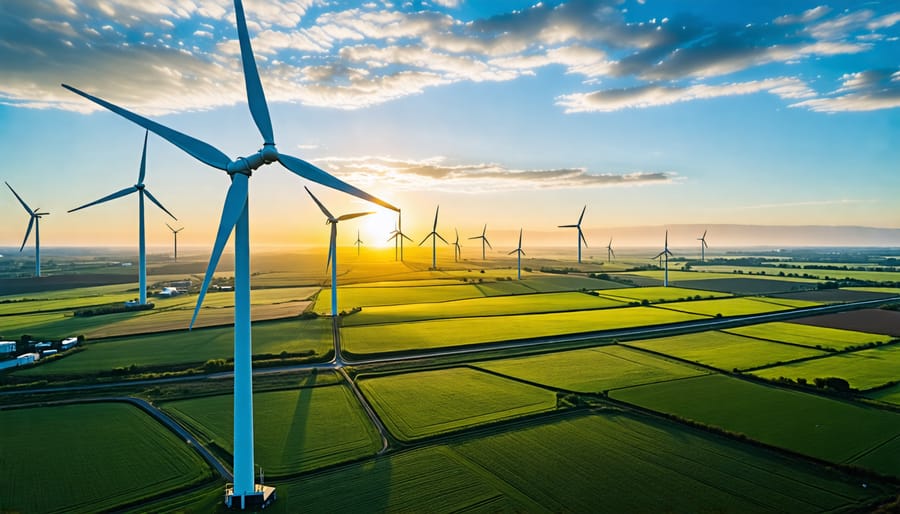
Siting and Integrating Wind Farms
Evaluating Wind Resources
To evaluate potential wind farm sites, experts assess a range of factors to determine the viability and potential energy output of the location. One critical aspect is wind speed, as higher speeds generally translate to greater electricity generation. Wind speed is typically measured using meteorological masts or remote sensing techniques like LIDAR (Light Detection and Ranging) over an extended period to account for seasonal variations. Another important consideration is wind consistency. Locations with steady, predictable wind patterns are preferred over those with highly variable or gusty conditions. Consistent winds allow for more efficient and reliable energy production. Topography also plays a significant role in site assessment. Ideal wind farm locations have open, unobstructed terrains such as plains, hilltops, or coastal areas. Obstacles like trees, buildings, or hills can create turbulence and reduce wind speed, negatively impacting turbine performance. Other factors evaluated include wind direction, air density, and accessibility. Prevailing wind direction influences turbine placement and orientation, while air density affects the power output of the turbines. Accessibility is crucial for construction, maintenance, and grid connection purposes. By thoroughly assessing these factors, developers can identify the most promising locations for wind farms, ensuring optimal performance and maximum clean energy generation.
Grid Integration Challenges and Solutions
Wind power’s variable nature poses challenges for grid integration. Unlike conventional power plants, wind farms generate electricity intermittently based on wind conditions. This variability can strain the grid, which requires a steady balance of supply and demand. However, advancements in forecasting, energy storage, and grid management are providing solutions. Improved wind forecasting models allow grid operators to predict wind power output more accurately, enabling better planning and resource allocation. Energy storage technologies, such as batteries and pumped hydro, can store excess wind energy during high-output periods and release it when demand increases or wind speeds decrease. This helps smooth out fluctuations and ensures a more stable power supply. Smart grid technologies and advanced control systems enable real-time monitoring and management of wind power integration. By optimizing power flows, minimizing transmission congestion, and coordinating with other renewable and conventional sources, these systems enhance grid flexibility and resilience. Additionally, interconnecting wind farms across larger geographic areas can mitigate local variability. When wind speeds decrease in one location, they may increase elsewhere, balancing overall power generation. Transmission infrastructure upgrades and regional cooperation are key to facilitating this integration. As wind power continues to grow, ongoing research and innovation in grid integration solutions will be crucial for maximizing its potential and ensuring a reliable, sustainable energy future.
Environmental and Economic Benefits
Wind energy offers significant environmental and economic benefits compared to traditional fossil fuel-based power generation. By harnessing the wind, a clean and renewable resource, wind turbines generate electricity without emitting greenhouse gases or other pollutants. This helps combat climate change and reduces air pollution, leading to improved public health outcomes. Additionally, wind farms require no water for cooling, conserving precious water resources in drought-prone areas. The positive economic impacts of wind energy are equally impressive. Wind power has become one of the most cost-competitive sources of new electricity generation, with prices falling by nearly 70% over the past decade. This means cheaper electricity for consumers and businesses alike. Moreover, the wind industry creates thousands of jobs across various sectors, from manufacturing and construction to operations and maintenance. These jobs often provide stable employment in rural communities where economic opportunities may be limited. Wind energy also enhances energy security by diversifying the power grid and reducing reliance on imported fossil fuels subject to price volatility. By investing in domestic wind power, countries can insulate themselves from global energy market fluctuations while keeping energy dollars within their own economies. Furthermore, wind projects generate local tax revenue and lease payments for landowners, injecting much-needed funds into rural economies. As the world transitions to a low-carbon future, wind energy will play an increasingly vital role in meeting our energy needs sustainably and affordably. By embracing wind power, we can create a cleaner, more prosperous future for generations to come.
The Future of Wind Power
As the world transitions towards a cleaner energy future, wind power is poised to play an increasingly vital role. Rapid advancements in innovations in wind turbine technology are driving this change, making wind energy more efficient, cost-effective, and accessible than ever before. One key area of development is the design of larger, more powerful turbines. With taller towers and longer blades, these next-generation turbines can capture more wind energy and generate electricity even in areas with lower wind speeds. This not only increases the potential for wind power generation but also opens up new locations for wind farm development. Another exciting frontier in wind energy is the expansion of offshore wind development. Offshore wind farms harness the strong, consistent winds found over the oceans, providing a vast and reliable source of renewable energy. Technological advancements, such as floating turbines that can be deployed in deeper waters, are making offshore wind increasingly viable. As countries around the world set ambitious targets for offshore wind capacity, this sector is expected to experience significant growth in the coming years. The integration of wind power into the grid is also evolving, with the development of smart grid technologies and energy storage solutions. These innovations allow for better management of the variable nature of wind energy, ensuring a stable and reliable electricity supply. As battery storage becomes more advanced and cost-effective, it will enable even greater integration of wind power into the energy mix. Looking ahead, wind energy is set to play a crucial role in the global transition to clean energy. With continued investment in research and development, supportive policies, and increasing public awareness, the future of wind power looks bright. As we work towards a more sustainable future, harnessing the power of the wind will undoubtedly be a key part of the solution, providing clean, renewable energy for generations to come.

